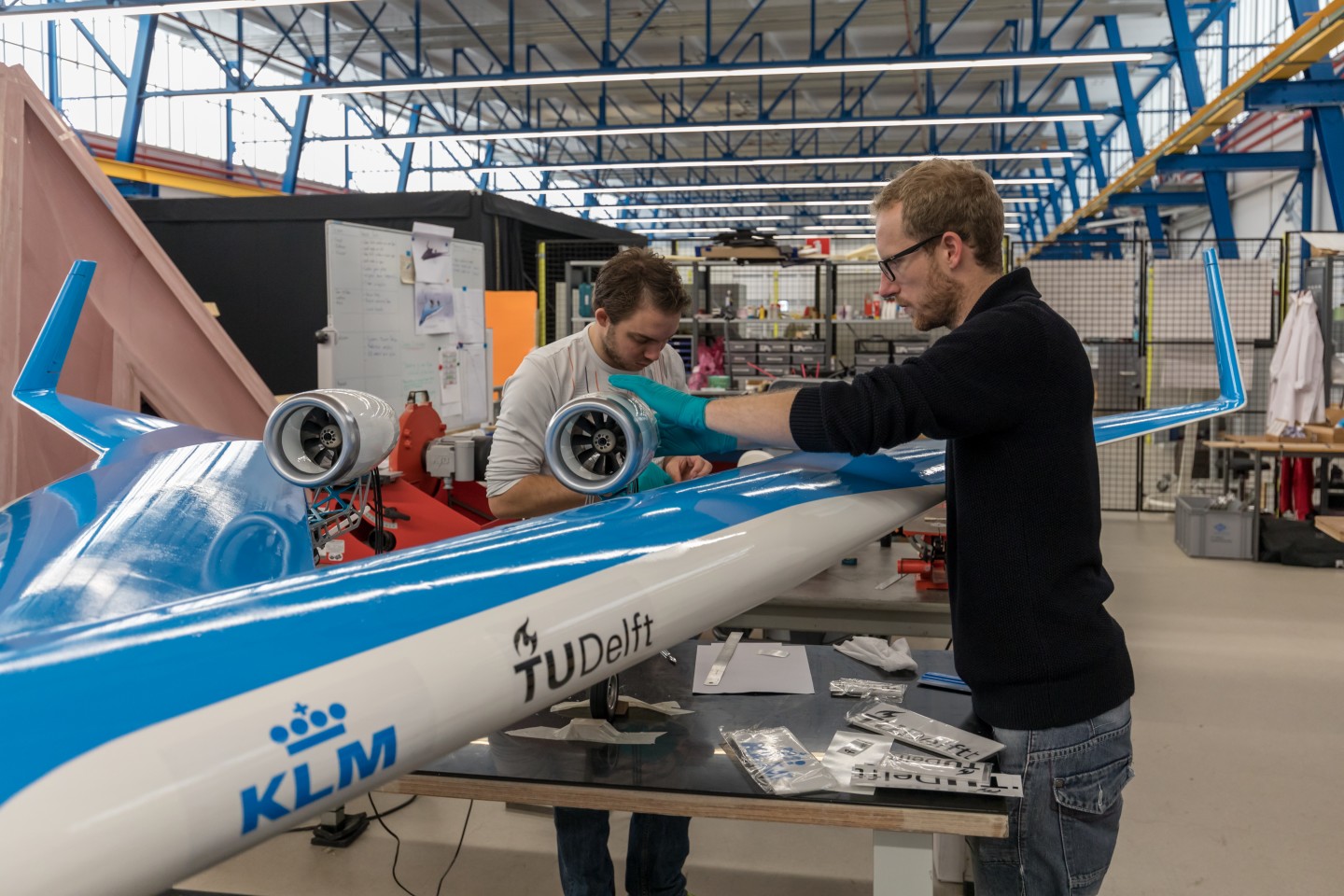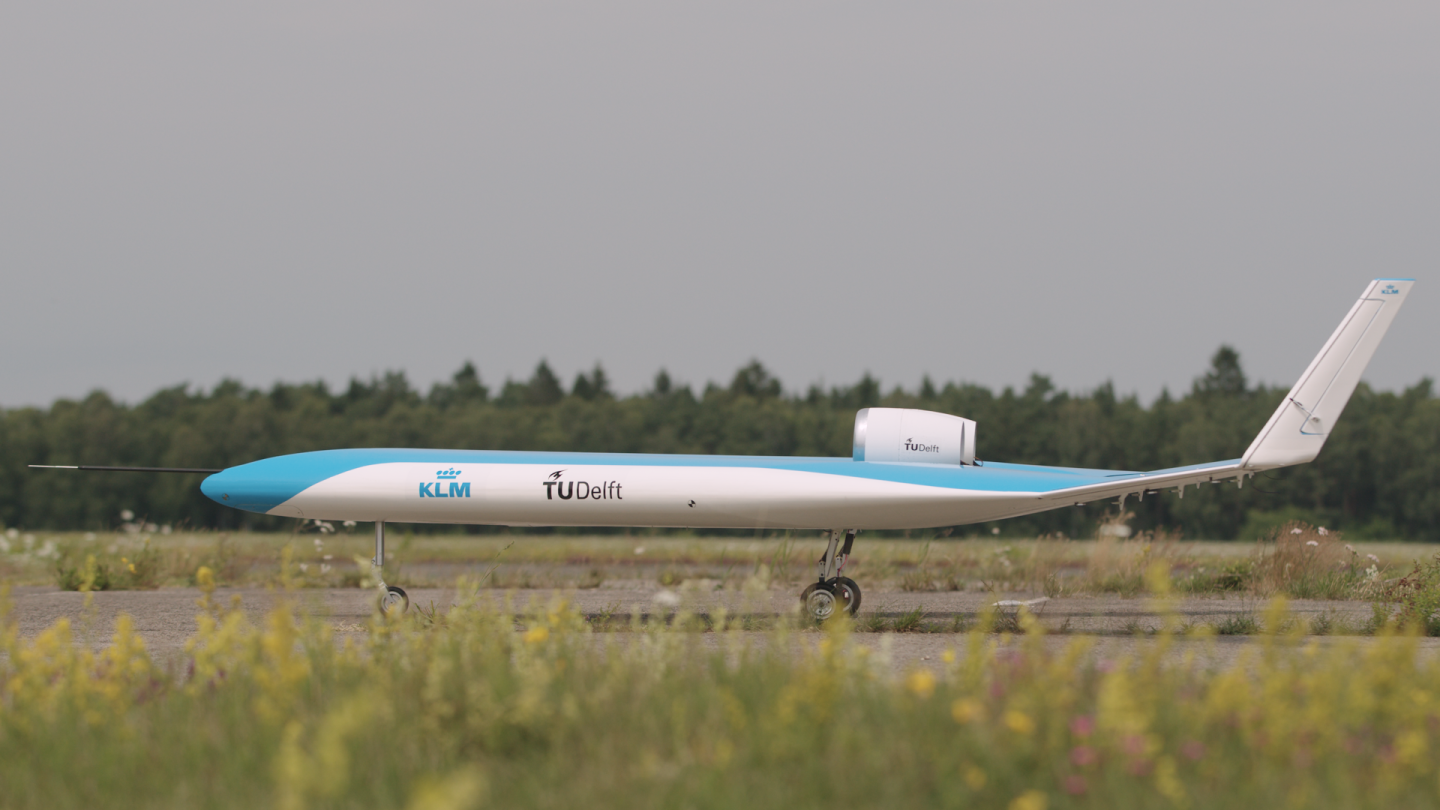Last year we caught wind of an interesting aviation concept cooked up by engineers at TU Delft, which consisted of a novel V-shaped design that promises significant efficiency gains over conventional aircraft. The project has now progressed from slick renders of a futuristic aircraft to a scale model capable of flight, which was recently shown in action for the very first time.
In its fully realized form, the Flying V aircraft would feature a cabin, cargo hold and fuel tanks integrated into its V-shaped wing structure, which would have a wingspan equal to that of an Airbus A350. This would enable the Flying V to take off and land using existing airport infrastructure, with enough space on board for the same amount of cargo and human passengers, with 314 seats in the standard configuration.
Where the Flying V would offer some performance benefits, however, is through improved aerodynamics due to its overall smaller airframe. Less mass means less resistance, which means less fuel is needed to carry the Flying V to its destination. According to the team, the reduced weight and unique shape of the Flying V could see it use 20 percent less fuel than an Airbus A350-900, the most advanced commercial aircraft in action today.

Henri Werij/TU Delft
There is a lot of research and development to take place before then, however. As part of its pursuit of this vision, the team has been developing a scale model with Dutch airline KLM, which joined the project last year. With a wingspan of 3.06 m (10 ft), a length of 2.76 m (9.05 ft) and a weight of 22.5 kg (50 lb), it is just a fraction of the size of the 55-meter-long (180-ft) concept, but allows the team to carry out some important and useful testing on a small and safe scale.
The model is fitted with a control system for drones and 6 kg (13 lb) of lithium-polymer batteries. It was first put through a raft of wind tunnel and ground tests in the Netherlands before being shipped off to Germany for its maiden flight.
This was carried out at an airbase in July with a team from Airbus, with a couple of key goals in mind. The team set out to show that the scale model could take off, carry out a range of test maneuvers until the batteries were almost depleted, and then land safely. With drone pilot Nando van Arnhem at the controls, the model’s maiden flight was deemed a success.

TU Delft
The team now has a collection of flight data to analyze and use as the basis for a new aerodynamic model. This model can then be used to determine what changes need to be made to the model aircraft to ensure smoother flights moving forward. For example, through the test flight the team uncovered signs of wobbling in the current design, with the aircraft struggling to keep its wings level and land smoothly. They now hope to use the data to correct this behavior.
From here, the team is also working to fine-tune the concept, with the next steps involving the exploration of sustainable propulsion, including the possibility of powering it with liquid hydrogen instead of kerosene.
You can check out the maiden flight of the scale model in the video below.
Flying-V – Scale model maiden flight
Source: TU Delft
Source of Article